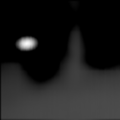 While we're on the subject of data, is there standardized format for collecting data and metadata?
While we're on the subject of data, is there standardized format for collecting data and metadata?
![]() for example I might build a station out of curiosity, but then it may lie dormant for days or weeks while my real job gets in the way. During that time, would my station be valuable to others ?
for example I might build a station out of curiosity, but then it may lie dormant for days or weeks while my real job gets in the way. During that time, would my station be valuable to others ?
 @Frank I noted that one too. You guys are saving me a lot of time. This is hard when you do not know where to look.
@Frank I noted that one too. You guys are saving me a lot of time. This is hard when you do not know where to look.
![]() Google-foo to the rescue/
Google-foo to the rescue/
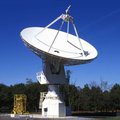 @Frank I talk with the SatNOGS guys on a daily basis, but doing something similar for radio astronomy is tricky. However, I haven't given up. Stay tuned...
@Frank I talk with the SatNOGS guys on a daily basis, but doing something similar for radio astronomy is tricky. However, I haven't given up. Stay tuned...

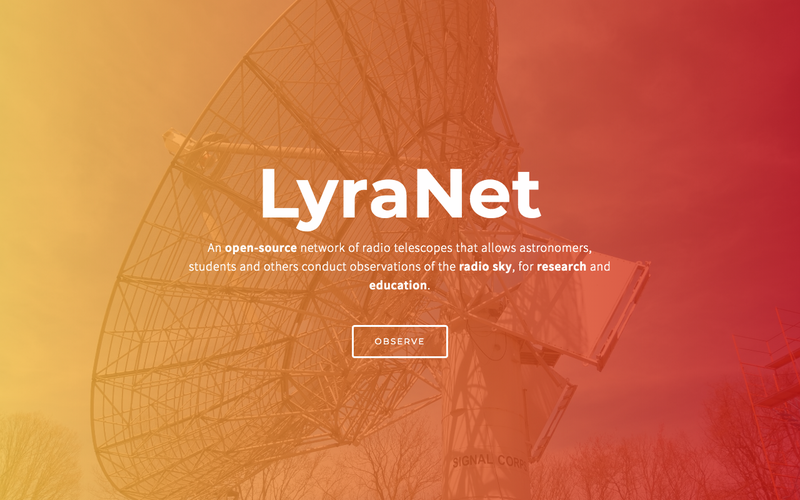


 Future plans includes interferometric work, but I still need to figure out how to deal with instrumentation limitations on each telescope.
Future plans includes interferometric work, but I still need to figure out how to deal with instrumentation limitations on each telescope.
![]() @Frank good question! I'd like to figure out how to do a kit. The electronics (plus a custom PCB) are the "easy" bit. I tried "Actobotics" for the mechanical initially with the thought that it would easy to specify a parts list for somebody to buy, but it was just frustratingly floppy and got pushed around by the wind, etc, etc
@Frank good question! I'd like to figure out how to do a kit. The electronics (plus a custom PCB) are the "easy" bit. I tried "Actobotics" for the mechanical initially with the thought that it would easy to specify a parts list for somebody to buy, but it was just frustratingly floppy and got pushed around by the wind, etc, etc
![]() @0xCoto oh snap !
@0xCoto oh snap !
 lyranet looks interesting, link?
lyranet looks interesting, link?
 @Steve Benesko Not ready yet, but send me an email at 0xcoto@protonmail.com if you want me to share it with you when it's ready (probably this month).
@Steve Benesko Not ready yet, but send me an email at 0xcoto@protonmail.com if you want me to share it with you when it's ready (probably this month).
![]() @James Aguirre the mechanicals are the tricky part. you can source darn near anything you need from the usual (suspect) sources online, but final assembly is always a headache. I'm thinking something similar to the way you can buy a generic 3DPrinter frame, then throw in your own brain-box and RF gear.
@James Aguirre the mechanicals are the tricky part. you can source darn near anything you need from the usual (suspect) sources online, but final assembly is always a headache. I'm thinking something similar to the way you can buy a generic 3DPrinter frame, then throw in your own brain-box and RF gear.

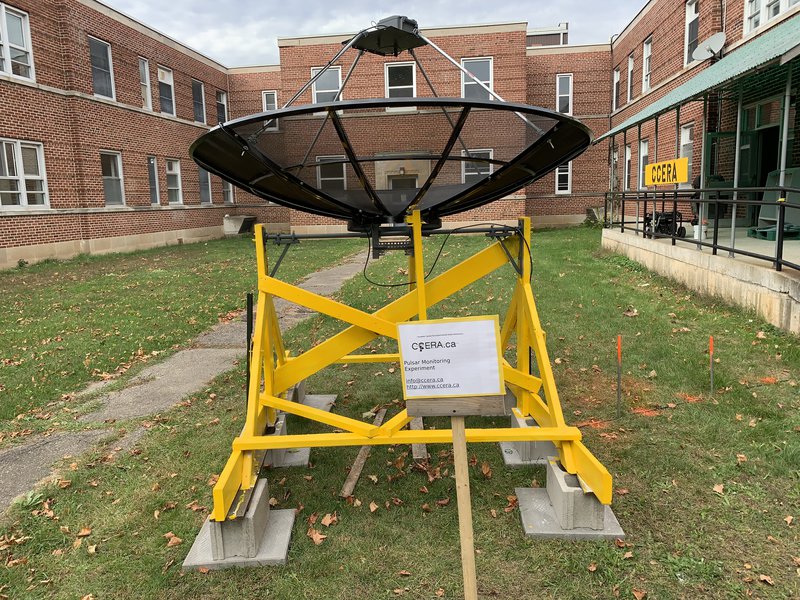

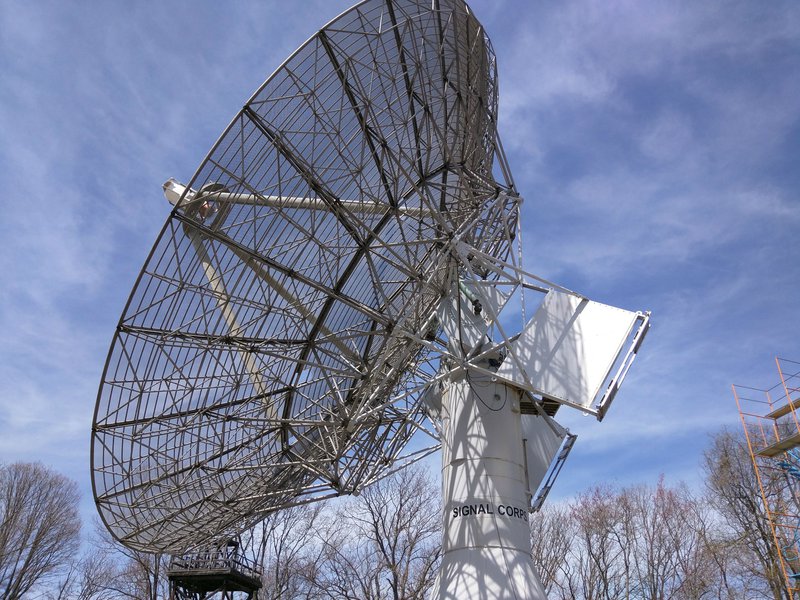
 I'm also planning to do some pulsar monitoring work with this 18m telescope...
I'm also planning to do some pulsar monitoring work with this 18m telescope...
 Good thing we have an ultra wideband spectrometer (500 MHz), so our sensitivity is significantly maximized.
Good thing we have an ultra wideband spectrometer (500 MHz), so our sensitivity is significantly maximized.

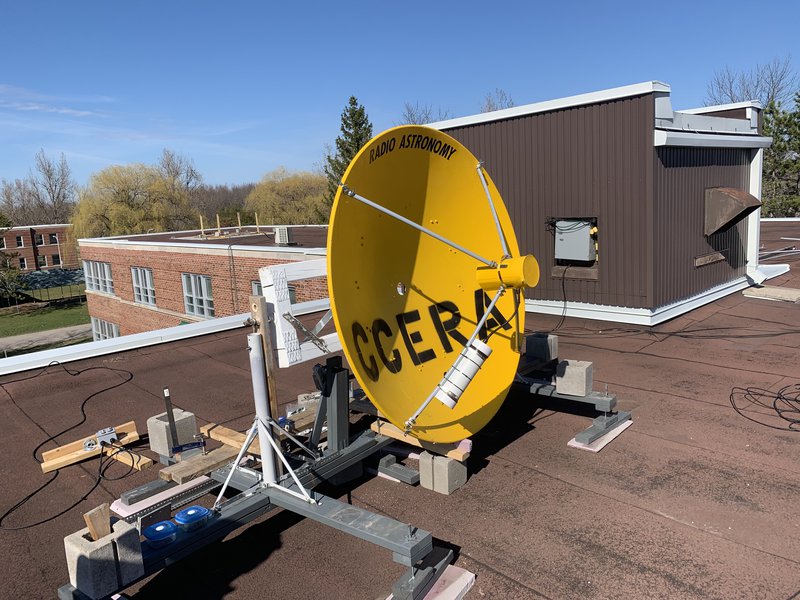
 @0xCoto where can we find more info on this LyraNET?
@0xCoto where can we find more info on this LyraNET?
![]() Any suggestions for introductory texts on radio astronomy (something for an undergraduate student?)
Any suggestions for introductory texts on radio astronomy (something for an undergraduate student?)
 @sjoerd.timmer It's not ready yet I'm afraid... Can you send me an email at 0xcoto@protonmail.com if you want to be notified once it's ready?
@sjoerd.timmer It's not ready yet I'm afraid... Can you send me an email at 0xcoto@protonmail.com if you want to be notified once it's ready?
 Sounds like there's plenty of interest in backyard RA. Any thoughts on setting up a group for ongoing discussion?
Sounds like there's plenty of interest in backyard RA. Any thoughts on setting up a group for ongoing discussion?
 @jeremy.lusk These may be useful: https://pictortelescope.com/Observing_the_radio_sky_with_PICTOR.pdf
@jeremy.lusk These may be useful: https://pictortelescope.com/Observing_the_radio_sky_with_PICTOR.pdf
https://pictortelescope.com/Building_your_very_first_Radio_Telescope.pdf
 I just found out that the gravitons I have been working on for the last 40 years are likely the "axions" that many people are working on. All the things I knew were likely - many of them are already worked on by others. The implications are that I can use electronic devices to measure gravity. Since their "axion" is my "graviton". It is a little more messy than that. The field is more like our atmosphere with a mixture of particles with different concentrations and properties. Optical sensors that can take very short exposures of what looks like dark current noise (the lens is covered) can be used as part of "time of flight" or "correlator" or "radar" or "interferometer" networks to scan in 3D. I am just trying to see if anyone is interested. It is hard doing things like that alone. And it needs separated sensors and careful coordination, that the radio astronomers have the background and interest for.
I just found out that the gravitons I have been working on for the last 40 years are likely the "axions" that many people are working on. All the things I knew were likely - many of them are already worked on by others. The implications are that I can use electronic devices to measure gravity. Since their "axion" is my "graviton". It is a little more messy than that. The field is more like our atmosphere with a mixture of particles with different concentrations and properties. Optical sensors that can take very short exposures of what looks like dark current noise (the lens is covered) can be used as part of "time of flight" or "correlator" or "radar" or "interferometer" networks to scan in 3D. I am just trying to see if anyone is interested. It is hard doing things like that alone. And it needs separated sensors and careful coordination, that the radio astronomers have the background and interest for.
 @Ethan Waldo John Kraus book is still quite relevant. Also NRAO has a lot of course material online.
@Ethan Waldo John Kraus book is still quite relevant. Also NRAO has a lot of course material online.
![]() @jeremy.lusk for more theory, there's also Essential Radio Astronomy (Condon & Ransom) and Tools of Radio Astronomy (Rohls and Wilson)
@jeremy.lusk for more theory, there's also Essential Radio Astronomy (Condon & Ransom) and Tools of Radio Astronomy (Rohls and Wilson)
 I would welcome an ongoing discussion on backyard RA.
I would welcome an ongoing discussion on backyard RA.
![]() Kraus is a classic
Kraus is a classic
![]() @0xCoto @Canadian Centre for Experimental Radio Astronomy @James Aguirre Thanks!
@0xCoto @Canadian Centre for Experimental Radio Astronomy @James Aguirre Thanks!
 @Canadian Centre for Experimental Radio Astronomy I was thinking more from builders, open source hardware discussion, etc.
@Canadian Centre for Experimental Radio Astronomy I was thinking more from builders, open source hardware discussion, etc.
![]() sorry, Rohlfs
sorry, Rohlfs
 @James Aguirre Some of the recent work on FRB's seem tantalizing. any chance amateur astronomy has a chance of either participating or of any detection?
@James Aguirre Some of the recent work on FRB's seem tantalizing. any chance amateur astronomy has a chance of either participating or of any detection?
 Especially that repeating FRB with the 16 day period
Especially that repeating FRB with the 16 day period
![]() I had a postdoc ask me that the other day. We went through the numbers, and you need a pretty big dish and a very fast recording device on the backend
I had a postdoc ask me that the other day. We went through the numbers, and you need a pretty big dish and a very fast recording device on the backend
![]() the pulses last milliseconds or less
the pulses last milliseconds or less
![]() and you want to be recording all the time, lest you miss one
and you want to be recording all the time, lest you miss one
 @kjansky1 FRB detection requires large-aperture antennas and very high-end digital signal processing instrumentation and algorithms, which end up with a very high necessary budget.
@kjansky1 FRB detection requires large-aperture antennas and very high-end digital signal processing instrumentation and algorithms, which end up with a very high necessary budget.
 We’re considering building a mini CHIME for a survey for FRBs.
We’re considering building a mini CHIME for a survey for FRBs.

https://en.wikipedia.org/wiki/Fast_radio_burst
Fast radio burst
In radio astronomy, a fast radio burst ( FRB) is a transient radio pulse of length ranging from a fraction of a millisecond to a few milliseconds, caused by some high-energy astrophysical process not yet understood. While extremely energetic at their source, the strength of the signal reaching Earth has been described as 1,000 times less than from a mobile phone on the Moon.
 Are FRB's an opening in the landscape where a network of amateur observers could outperform traditional large facilities?
Are FRB's an opening in the landscape where a network of amateur observers could outperform traditional large facilities?
![]() the sweet spot seems to be around ~400 MHz, so that makes things a big harder
the sweet spot seems to be around ~400 MHz, so that makes things a big harder
 So it seems just out-of-scope for the average hobyist...
So it seems just out-of-scope for the average hobyist...
 What are your guess as to the phenomena?
What are your guess as to the phenomena?
 I'm planning L-band monitoring of FRB 180916.J0158+65 with the 18-meter dish with a bandwidth of ~500 MHz.
I'm planning L-band monitoring of FRB 180916.J0158+65 with the 18-meter dish with a bandwidth of ~500 MHz.
![]() yeah, that's the right kind of scale
yeah, that's the right kind of scale
 @kjansky1 There are a ton of theories (which indicate the bursts are of astrophysical origin and most likely not related to ET transmissions): http://adsabs.harvard.edu/abs/2018arXiv181005836P
@kjansky1 There are a ton of theories (which indicate the bursts are of astrophysical origin and most likely not related to ET transmissions): http://adsabs.harvard.edu/abs/2018arXiv181005836P
 SOME FRBs are very bright. Making smaller apertures at least conceptually feasible.
SOME FRBs are very bright. Making smaller apertures at least conceptually feasible.
![]() @kjansky1 I'm going with black holes. ;)
@kjansky1 I'm going with black holes. ;)
 I was working on methods for monitoring to predict when a pulse is starting, the go to high resolution. That seems to work. They use it with some newer security cameras. The cameras have the bandwidth that many other techniques do not. I am trying to adapt their video ADCs (12 to 16 bit) multichannel to other data streams. Why they are good for correlation networks.
I was working on methods for monitoring to predict when a pulse is starting, the go to high resolution. That seems to work. They use it with some newer security cameras. The cameras have the bandwidth that many other techniques do not. I am trying to adapt their video ADCs (12 to 16 bit) multichannel to other data streams. Why they are good for correlation networks.
 when a pulse is starting, then go to high cadence or tempo or sampling or frame rate. I am trying to look at all the people doing these sorts of things
when a pulse is starting, then go to high cadence or tempo or sampling or frame rate. I am trying to look at all the people doing these sorts of things
 @RichardCollins You could always constantly record in high resolution and discard if pulse isn't detected
@RichardCollins You could always constantly record in high resolution and discard if pulse isn't detected
 @Canadian Centre for Experimental Radio Astronomy I've written a de-dispersion algorithm in Python if you need it for real-time FRB candidate analysis.
@Canadian Centre for Experimental Radio Astronomy I've written a de-dispersion algorithm in Python if you need it for real-time FRB candidate analysis.
 That was a really fast hour, I have to say. Sadly, we have to let Dr. Aguirre get back to work, but everyone should feel free to stick around and continue the chat. I found this really useful and exciting. I've been eyeing a few old Dish network antennas in my neighborhood, so maybe it's time to latch onto one.
That was a really fast hour, I have to say. Sadly, we have to let Dr. Aguirre get back to work, but everyone should feel free to stick around and continue the chat. I found this really useful and exciting. I've been eyeing a few old Dish network antennas in my neighborhood, so maybe it's time to latch onto one.
 This has been a great chat, wish there was a regular meetup, say monthly.
This has been a great chat, wish there was a regular meetup, say monthly.
 @Ethan Waldo That is what's generally done, but it's very computationally expensive.
@Ethan Waldo That is what's generally done, but it's very computationally expensive.
 Curious if the newly -launched solar polar orbiter spacecraft will
Curious if the newly -launched solar polar orbiter spacecraft will
open up any new research partnerships/collaborations for RA?
![]() I certainly learned something, and there are a lot of very impressive projects out there!
I certainly learned something, and there are a lot of very impressive projects out there!
 Great. Thanks for sharing!
Great. Thanks for sharing!
![]() Thanks for the opportunity @hackaday.io !! Cheers @James Aguirre !
Thanks for the opportunity @hackaday.io !! Cheers @James Aguirre !
![]() @kjansky1 a regular meet-up would be very interesting!
@kjansky1 a regular meet-up would be very interesting!
![]() Really great - thanks for T'ing it up - hope we can do it again sometime soon
Really great - thanks for T'ing it up - hope we can do it again sometime soon
 Thanks so much for giving us your time today @James Aguirre !
Thanks so much for giving us your time today @James Aguirre !
 yes this has been interesting for me as well, would like a regular meet up to learn more
yes this has been interesting for me as well, would like a regular meet up to learn more
 thank you for the captivating chat all!
thank you for the captivating chat all!
 @Dan Twedt Can you elaborate?
@Dan Twedt Can you elaborate?
 Take care!
Take care!
 @0xCoto @James Aguirre Thanks!
@0xCoto @James Aguirre Thanks!
 Don't forget next week's chat:
Don't forget next week's chat:

https://hackaday.io/event/169511-open-source-neuroscience-hardware-hack-chat
 Another vote here for a regular meet up.
Another vote here for a regular meet up.
 Thanks Dan.
Thanks Dan.
![]() my pleasure!
my pleasure!
 We have a Radio Astronomy chat on Discord here: https://discord.gg/eWXf93A
We have a Radio Astronomy chat on Discord here: https://discord.gg/eWXf93A
 Lutetium
Lutetium
Discussions
Become a Hackaday.io Member
Create an account to leave a comment. Already have an account? Log In.